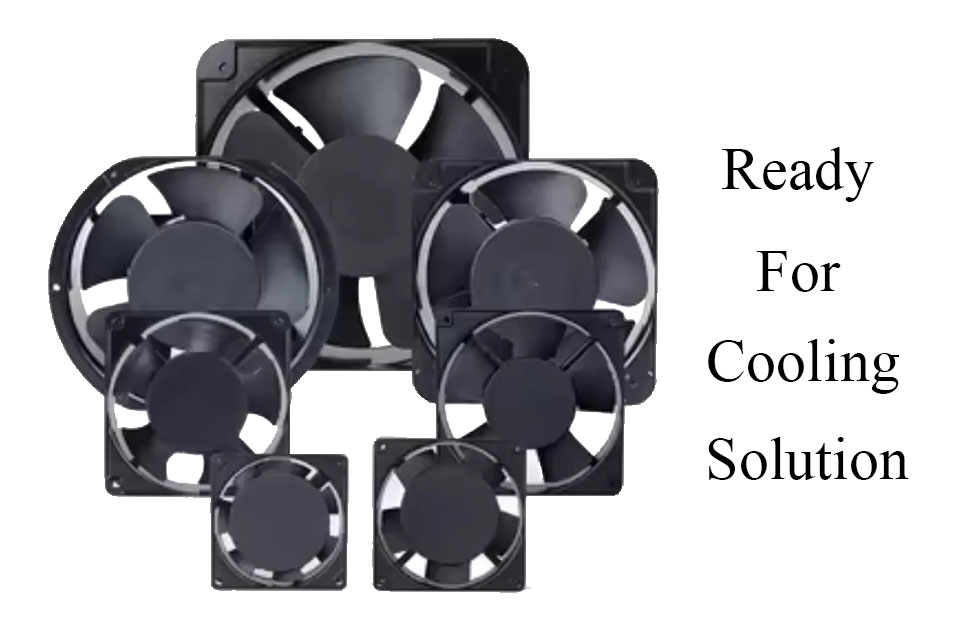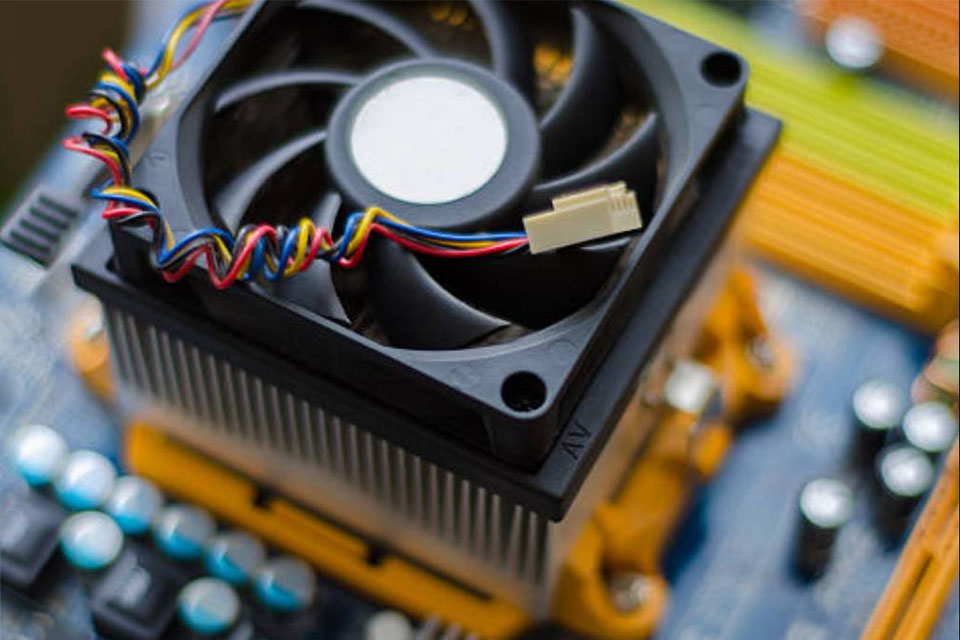DC Axial Fans-The Basics of Low Voltage Cooling Solutions
Summary
DC axial fans are specialized cooling devices designed to facilitate efficient airflow by drawing air through the fan and expelling it along the axis of the motor. These fans are particularly notable for their role in cooling electronic components, where they help dissipate heat and prevent overheating, thereby enhancing the performance and longevity of various devices.
The technology behind DC axial fans has become increasingly important in diverse applications, including industrial automation, automotive systems, telecommunications, and renewable energy solutions, owing to their energy efficiency and versatility in low-voltage environments.
At the heart of most DC axial fans is the brushless DC (BLDC) motor, which offers several advantages over traditional brushed motors, such as higher efficiency, reduced maintenance, and improved performance longevity. The fan's design incorporates advanced features that allow for substantial airflow while maintaining low noise levels, making them suitable for use in noise-sensitive environments like offices and medical facilities.
Furthermore, the compact nature of these fans enables them to fit into tight spaces without compromising performance, thereby meeting the cooling needs of densely packed electronic components and systems.
Despite their numerous advantages, DC axial fans face challenges, such as higher initial costs compared to AC fans and performance limitations in high-temperature conditions. Additionally, the market's increasing demand for customized and technologically advanced solutions has led to competition that may pose challenges for smaller manufacturers.
Nevertheless, the growing focus on energy efficiency and sustainability continues to drive innovation and adoption in the cooling solutions market, with emerging trends such as the integration of IoT and AI enhancing their capabilities and operational effectiveness.
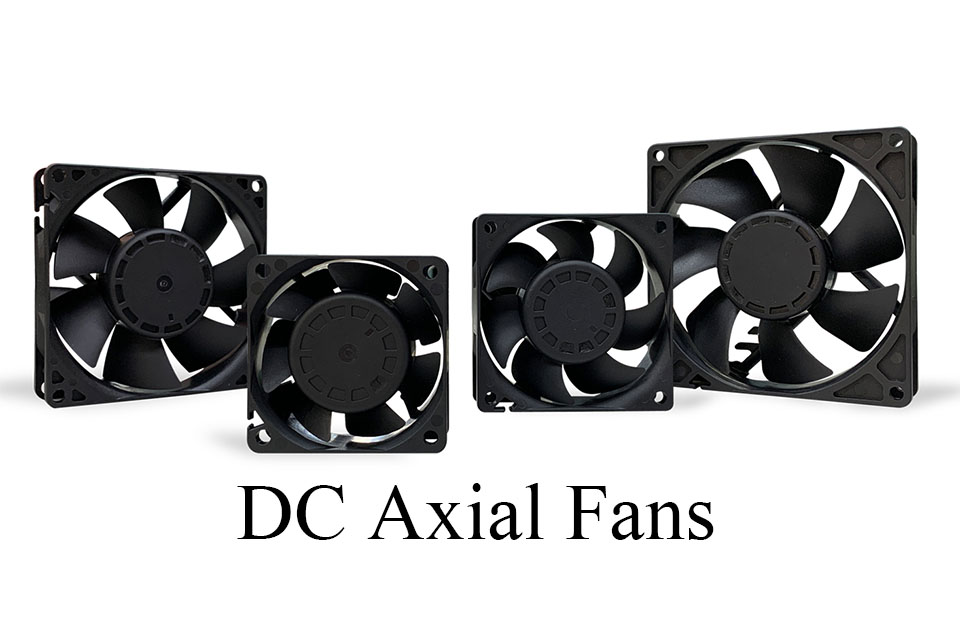
Design and Construction
Overview of DC Axial Fans
DC axial fans are specifically engineered to facilitate efficient airflow by drawing air through the fan and expelling it along the axis of the motor. Their design is critical for cooling electronic components, ensuring heat dissipation that prevents overheating and prolongs device functionality. The construction of a typical DC fan motor consists of several key components, including the rotor, stator, outer frame, and motor, with the latter often featuring a brushless design for enhanced performance.
Motor Types and Mechanisms
Brushless DC Motors
Brushless DC (BLDC) motors have gained popularity in industrial applications due to their high efficiency, reliability, and low maintenance requirements. Unlike traditional brushed motors, BLDC motors utilize permanent magnets in the rotor, eliminating the need for brushes which reduces wear and tear, thereby extending the motor's lifespan. This design also allows for excellent speed and torque control, making them suitable for variable speed fan applications.
Construction Details
The structure of a brushless DC motor comprises a rotor that includes an iron core and wound coils, and a stator that may contain either an iron core or permanent magnets. The interaction between the magnetic fields of the rotor and stator creates the driving force necessary for rotation, which can be easily varied by adjusting the strength of the magnetic field in the rotor.
Fan Specifications
DC axial fans are available in a range of specifications that highlight their airflow rate, static pressure, noise level, and power consumption. These parameters are essential for engineers when assessing the cooling needs of various applications, allowing for informed decisions that align with performance requirements and project objectives.
Working Principle
DC axial fans operate based on the fundamental principle of converting electrical energy into mechanical energy to generate airflow. At the heart of these fans is a brushless DC motor, which is distinguished from traditional motors by its use of permanent magnets and electronic commutation, eliminating the need for brushes. This design not only enhances efficiency by reducing friction but also contributes to the longevity and reliability of the fan.
When a DC voltage is applied to the motor, it produces a magnetic field. This magnetic field interacts with the rotor, which has permanent magnets, causing it to spin. The spinning rotor, in conjunction with the fan blades, creates airflow that is parallel to the air intake direction. This configuration allows DC axial fans to produce high-volume, low-pressure airflow, making them particularly effective for cooling both small and large equipment and spaces.
The performance of DC axial fans can be characterized by their ability to deliver substantial airflow while operating quietly, a feature that is increasingly important in various applications, including electronic cooling, HVAC systems, and industrial ventilation. Understanding the specific airflow requirements and thermal management needs is essential for selecting the appropriate DC axial fan for a given application.
Moreover, the airflow produced by these fans can be calculated using established thermal equations, which consider factors such as internal heat dissipation and the maximum allowable temperature rise within the system. This mathematical framework allows engineers to optimize the cooling solutions provided by DC axial fans, ensuring efficient temperature regulation.
Applications
DC axial fans play a crucial role across a wide range of industries due to their efficient cooling capabilities and versatility. These fans are particularly vital in applications where maintaining optimal thermal management is essential to the performance and longevity of electronic components and machinery.
Industrial Automation
In industrial automation, DC axial fans are utilized in various equipment, including computer servers, factory machines, and warehouse robotics. They help ensure that these devices do not overheat, which can lead to performance degradation or failure. For example, machine tool electrical cabinets often employ DC axial fans to maintain optimal temperatures, ensuring precision and accuracy in manufacturing processes.
Automotive Sector
The automotive industry also benefits from the integration of DC axial fans, particularly in controlling engine cooling performance. These fans allow for adjustable cooling based on driving conditions and engine load, which is vital for overall vehicle efficiency and reliability.
Medical Technology
In the medical field, DC axial fans are employed in medical devices to ensure that equipment operates within safe temperature ranges and some specialize in manufacturing these fans, providing efficient cooling solutions that maintain the performance and reliability of critical medical technology.
Renewable Energy
Furthermore, DC axial fans have found significant applications in renewable energy systems, such as solar panels and wind turbines. They are crucial for cooling power electronics and control systems that experience high heat loads during operation, thereby enhancing the reliability and efficiency of renewable energy products.
Telecommunications
Telecommunication facilities rely on DC axial fans to prevent overheating of network equipment, which can lead to service interruptions and costly downtime. By maintaining proper cooling, these fans help preserve the integrity of critical network operations and prevent revenue loss from equipment failure.
Environmental Considerations
Innovative cooling solutions using DC axial fans are also being developed with environmental sustainability in mind. Eco-friendly cooling methods, such as utilizing renewable energy sources and implementing heat recovery systems, are becoming increasingly popular. This shift not only addresses operational efficiency but also minimizes the environmental impact of traditional cooling methods.
Advantages
DC axial fans offer numerous benefits that make them an attractive choice for various applications. Their efficient airflow and compact design contribute significantly to their popularity in modern thermal management systems.
Energy Efficiency
One of the primary advantages of DC fans is their energy-efficient design, which allows them to operate effectively while consuming less power compared to traditional AC fans. This reduced energy consumption is particularly beneficial in contexts where operational costs and environmental impact are major concerns. For instance, DC fans can save between 60% to 90% of energy costs compared to conventional AC units, making them a financially and environmentally sound option.
Compact Design
The compact nature of DC axial fans allows them to fit into constrained spaces without sacrificing performance. Innovations such as lower profile designs and reversible flow capabilities help optimize airflow in environments with limited room for traditional cooling solutions. This adaptability is especially valuable in applications involving dense electronic components, where effective thermal management is critical.
Versatility in Applications
DC axial fans are highly versatile and can be applied in various fields, including electronics cooling, automotive systems, telecommunications, industrial automation, and medical devices. Their ability to operate in low-voltage environments further enhances their adaptability, making them suitable for use in tightly packed spaces where efficient cooling solutions are essential.
Reduced Noise Levels
DC fans are generally quieter than their AC counterparts, primarily due to their brushless motor designs, which reduce friction and noise generation. This feature is particularly advantageous in noise-sensitive environments such as medical facilities or office spaces, where minimizing audible noise is a priority.
Longevity and Reliability
Centrifugal blowers, often compared with axial fans, demonstrate that both fan types can have long lifespan with proper maintenance, typically lasting between 15 to 20 years. DC fans benefit from robust design features that enhance their longevity, especially when used in applications that require consistent and reliable performance under varying conditions.
Disadvantages
While DC axial fans offer several benefits, they also present certain disadvantages that must be considered when evaluating their suitability for specific applications.
Initial Cost
One of the primary drawbacks of DC axial fans is their higher initial cost compared to AC fans. Although AC fans may have lower upfront expenses, the long-term operational costs associated with energy consumption are often significantly higher for AC models. This disparity in initial investment can be a crucial factor for organizations with strict budget constraints, particularly when the overall lifecycle cost is considered.
Power Supply Limitations
DC fans are highly dependent on suitable power supply configurations. Many existing systems are designed for low-voltage applications, and transitioning to high-voltage DC can require additional power converters. This need for supplementary equipment not only adds to the overall cost but also introduces potential points of failure, complicating system design and maintenance.
Performance Constraints
DC axial fans may experience performance limitations in certain environments. Their efficiency can decrease in high-temperature situations, potentially impacting their cooling effectiveness when it is most needed. Additionally, the reliance on advanced technologies such as IoT and AI for optimal performance may not be feasible for all applications, particularly in smaller operations that lack the resources for such investments.
Market Competition
The increasing complexity and sophistication of fan designs can place smaller manufacturers at a disadvantage. As the market demands more customized and technologically advanced solutions, companies with limited research and development budgets may struggle to keep pace with larger competitors. This challenge can hinder innovation and the introduction of new products that meet evolving industry standards.
Environmental Compliance
While compliance with environmental and safety regulations is essential, it can also create additional hurdles for manufacturers. The need to adhere to standards like RoHS and EMC can necessitate more rigorous testing and production processes, which may not be as easily achievable for all manufacturers, especially those producing low-cost options. This can affect the availability and diversity of DC axial fan options in the market.
Maintenance and Lifespan
DC axial fans are critical components in various cooling applications, and their longevity largely depends on proper maintenance and operational practices. Regular upkeep is essential to ensure that these fans function efficiently and reliably over time.
Importance of Maintenance
Routine maintenance practices can significantly extend the lifespan of DC axial fans.
- Routine Inspections: Conduct regular checks to identify signs of wear and tear, which can help prevent major failures. Inspections should look for unusual noises, vibrations, or temperature fluctuations that may indicate potential issues.
- Cleaning: Regular cleaning of the ventilation systems is crucial to prevent dust accumulation that can impair airflow and efficiency. This includes cleaning air filters monthly and cooling coils annually to optimize heat transfer.
- Component Replacement: Promptly replacing worn components ensures that the fan operates at peak performance levels. Failure to replace degraded parts can lead to inefficiencies and increase operational costs.
Lifespan Expectations
The typical lifespan of DC axial fans ranges between 15 to 20 years, although this can vary based on specific applications and maintenance practices. High-stress conditions may reduce the operational life of these fans, while consistent maintenance can enhance their durability. Additionally, manufacturers often design these fans to meet environmental and safety standards, which can also impact their reliability and lifespan.
Operational Constraints
While maintenance is vital, several operational constraints can affect the performance of DC axial fans. Factors such as building orientation, design complexity, and controllability can lead to potential malfunctions if not addressed prior to installation. Therefore, a thorough assessment of these constraints should be conducted during the planning and selection phase of HVAC systems.
Future Trends
The future of the DC axial fan market appears optimistic, driven by various factors that contribute to sustained growth and innovation. A significant trend is the increasing demand for energy-efficient cooling solutions across diverse industries, particularly in the electric vehicle, telecommunications, and data center sectors. As companies prioritize sustainability and cost reduction, the adoption of energy-efficient DC axial fans is expected to rise substantially.
Technological Advancements
Advancements in technology, including the integration of artificial intelligence (AI) and the Internet of Things (IoT), are poised to further propel the market. These technologies facilitate more sophisticated cooling management systems that can dynamically adjust to varying thermal loads, optimizing performance and energy consumption. Companies are increasingly investing in research and development to enhance the capabilities of DC axial fans, leading to innovations in design and functionality.
Emerging Markets
Emerging economies in regions such as Asia-Pacific, Africa, and Latin America present significant opportunities for market expansion. The rapid industrialization and urbanization in countries like China and India are driving the demand for efficient cooling systems in automotive, consumer electronics, and manufacturing sectors. As these regions modernize their infrastructure, the market for DC axial fans is expected to experience substantial growth, creating new avenues for manufacturers and investors.
Strategic Partnerships and Acquisitions
The ongoing consolidation within the industry is another trend shaping the future landscape of the DC axial fan market. Mergers and acquisitions (M&A) are becoming common as companies seek to enhance their technological capabilities and expand their market presence. Collaborations with original equipment manufacturers (OEMs) are also anticipated to play a crucial role in propelling market growth, particularly in sectors like automotive and consumer electronics.
Focus on Scalability and Reliability
As equipment becomes increasingly powerful, the need for advanced cooling solutions becomes critical. Businesses are shifting towards targeted cooling techniques that ensure optimal performance while minimizing costs and environmental impact. This focus on scalability and reliability will be key in addressing the evolving cooling requirements of various industries. Regular maintenance and monitoring of cooling systems will also become essential for ensuring long-term operational efficiency and equipment longevity.
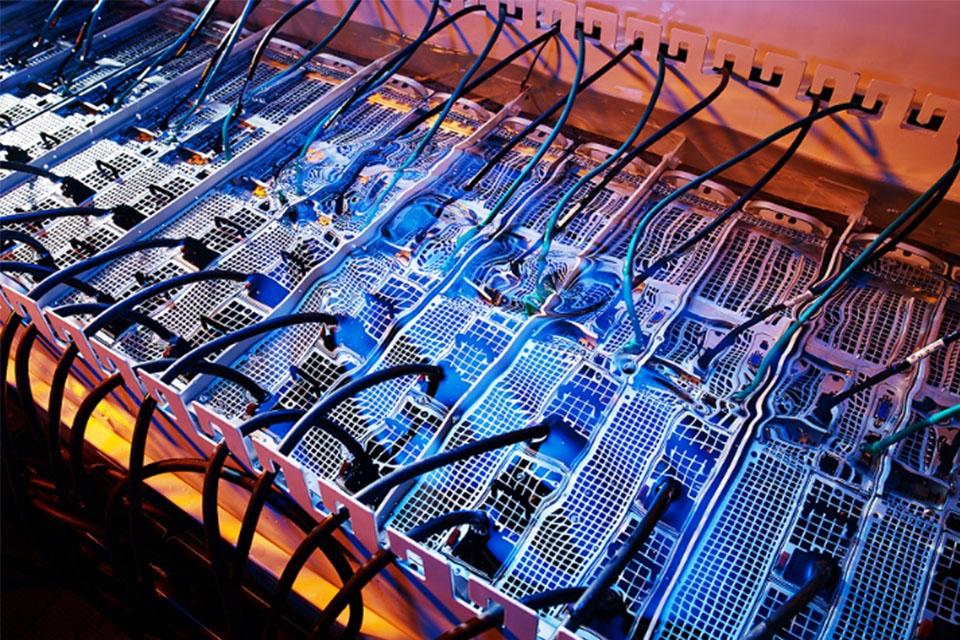 Why Blower Fans Are Essential in Fiber Optic Equipment
Why Blower Fans Are Essential in Fiber Optic Equipment
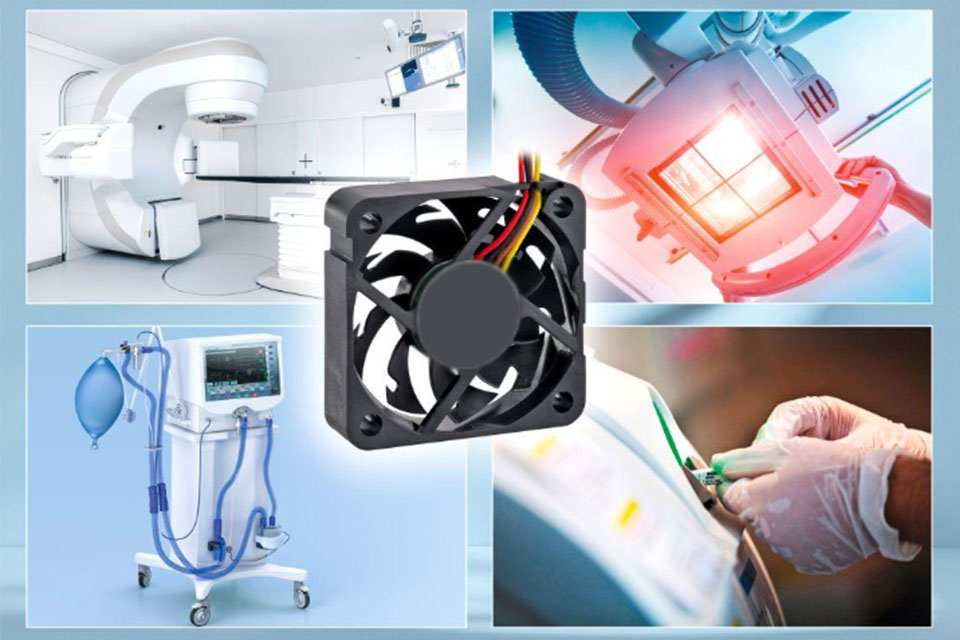 Cooling Fans in Portable Medical Devices
Cooling Fans in Portable Medical Devices
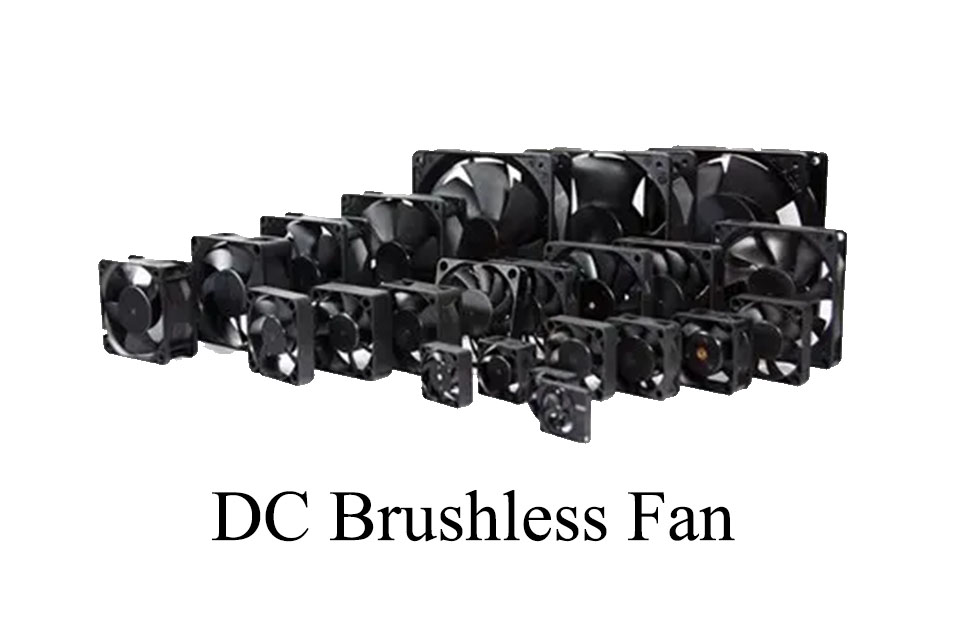 The Critical Role of DC Brushless Fans in Modern Electronics Cooling
The Critical Role of DC Brushless Fans in Modern Electronics Cooling
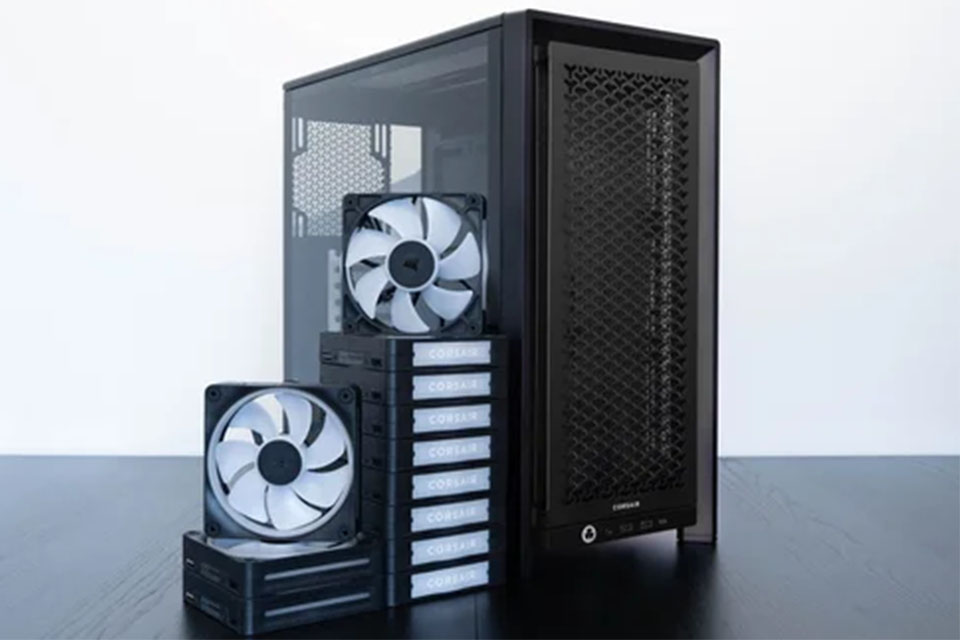 Water-Resistant DC Fans for Harsh Environments
Water-Resistant DC Fans for Harsh Environments

